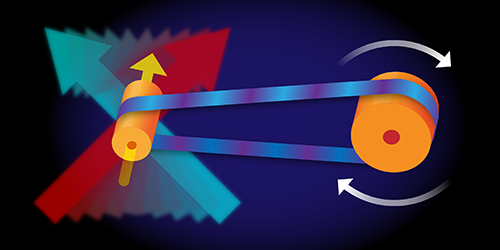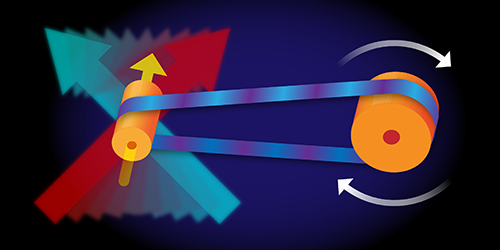A Heat Engine Made of a Single Ion Spin
Heat engines convert thermal energy into motion. For example, steam turbines at power plants use the pressure of heated water vapor to turn a rotor. Recently, researchers have begun using similar principles to develop atomic-scale heat engines made of systems such as single ions and impurities in diamond. Now, Ulrich Poschinger of the University of Mainz, Germany, and colleagues have developed a heat engine that converts the energy of a calcium ion’s electronic spin into motion of the particle.
To create their heat engine, the team trapped the calcium ion with electric fields and controlled the orientation of its valence electron spin using laser radiation. Then, they used a different laser to couple the spin state to the ion’s motion. By alternating the spin state, they moved the ion back and forth, like a simple harmonic oscillator.
A heat engine consists of four components: a working agent (such as the steam in a turbine), two heat reservoirs at different temperatures, and a mechanism for extracting work. Applying this framework to the calcium ion, the valence electron’s spin serves as the working agent. One laser, which controls the ion’s spin state, emulates the coupling to hot and cold reservoirs, which, in the experiments, were at 3.5 mK and 0.4 mK, respectively. The other laser, which converts the ion’s spin state into motion, corresponds to the mechanism for extracting work. By characterizing this simple engine, the team aims to better understand thermodynamics on the atomic scale.
This research was published in Physical Review Letters.
–Sophia Chen
Sophia Chen is a freelance science writer based in Tucson, Arizona.





